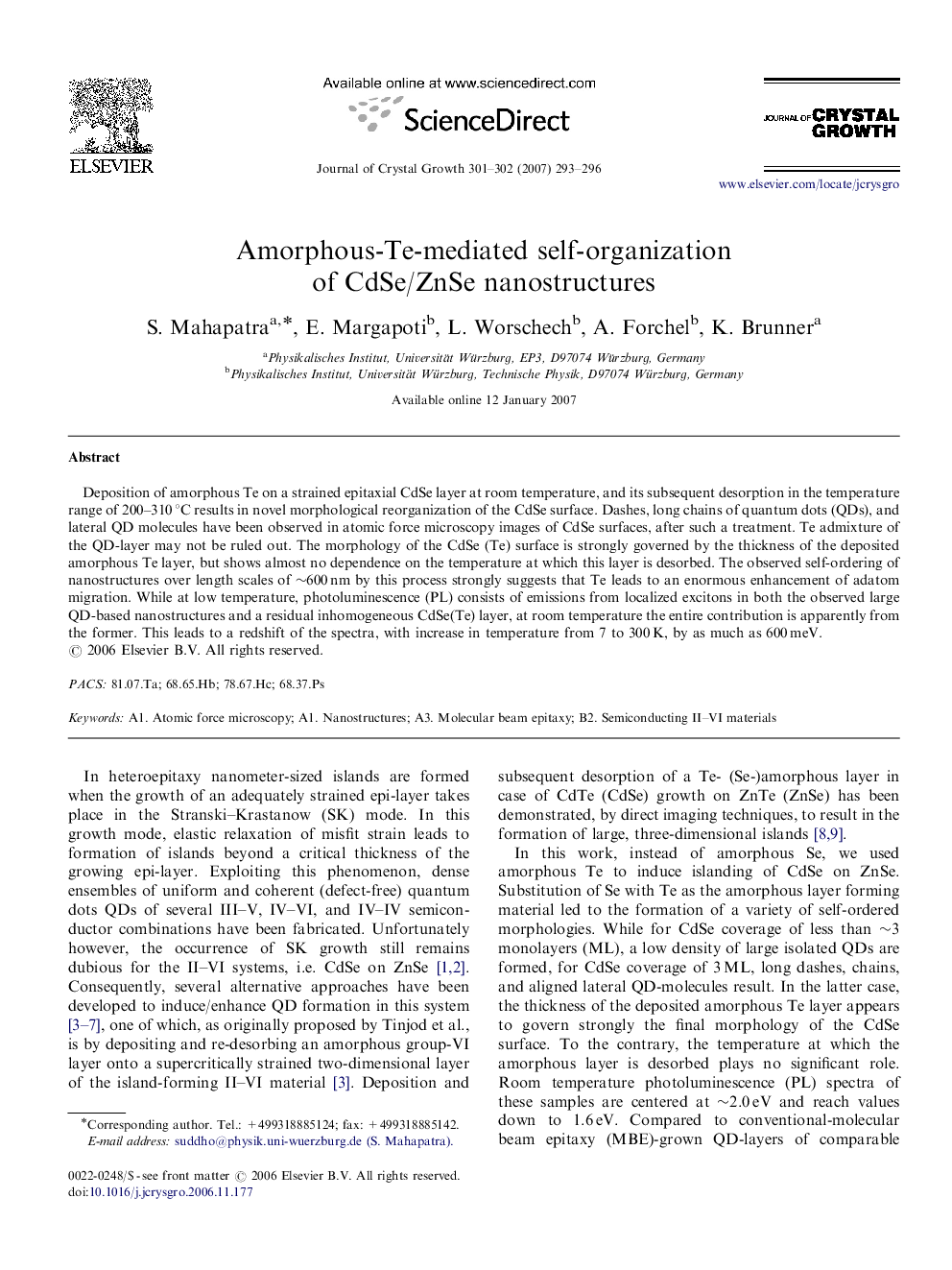| Article ID | Journal | Published Year | Pages | File Type |
|---|---|---|---|---|
| 1795339 | Journal of Crystal Growth | 2007 | 4 Pages |
Abstract
Deposition of amorphous Te on a strained epitaxial CdSe layer at room temperature, and its subsequent desorption in the temperature range of 200-310 °C results in novel morphological reorganization of the CdSe surface. Dashes, long chains of quantum dots (QDs), and lateral QD molecules have been observed in atomic force microscopy images of CdSe surfaces, after such a treatment. Te admixture of the QD-layer may not be ruled out. The morphology of the CdSe (Te) surface is strongly governed by the thickness of the deposited amorphous Te layer, but shows almost no dependence on the temperature at which this layer is desorbed. The observed self-ordering of nanostructures over length scales of â¼600 nm by this process strongly suggests that Te leads to an enormous enhancement of adatom migration. While at low temperature, photoluminescence (PL) consists of emissions from localized excitons in both the observed large QD-based nanostructures and a residual inhomogeneous CdSe(Te) layer, at room temperature the entire contribution is apparently from the former. This leads to a redshift of the spectra, with increase in temperature from 7 to 300 K, by as much as 600 meV.
Keywords
Related Topics
Physical Sciences and Engineering
Physics and Astronomy
Condensed Matter Physics
Authors
S. Mahapatra, E. Margapoti, L. Worschech, A. Forchel, K. Brunner,
